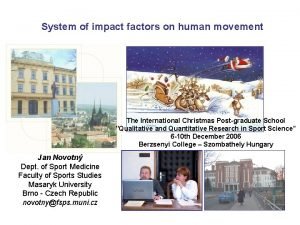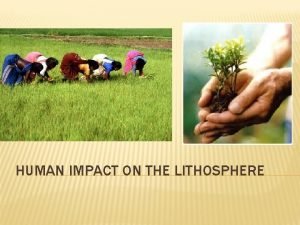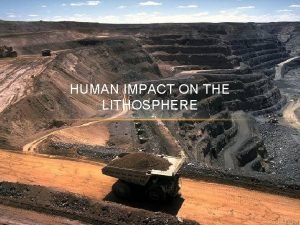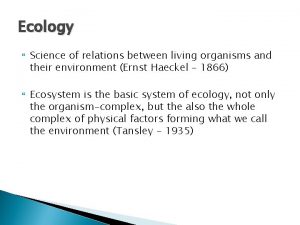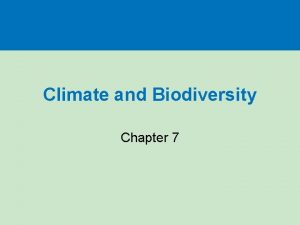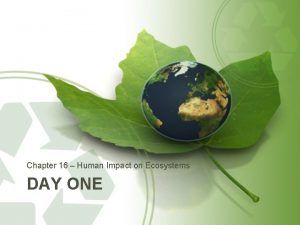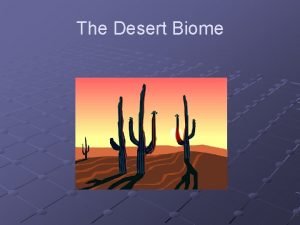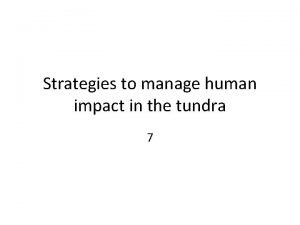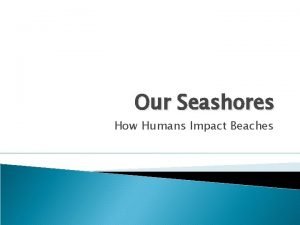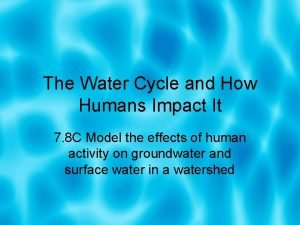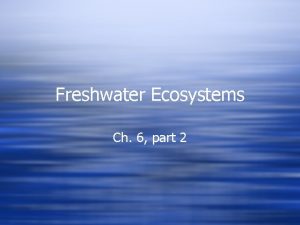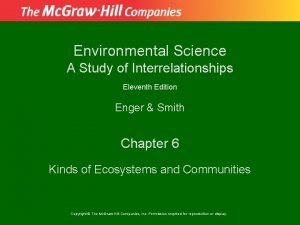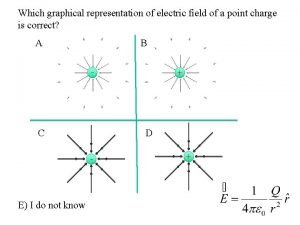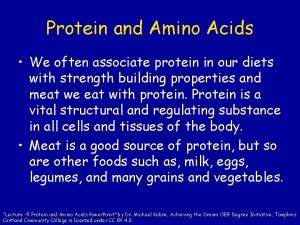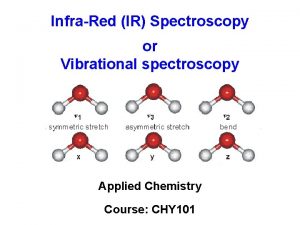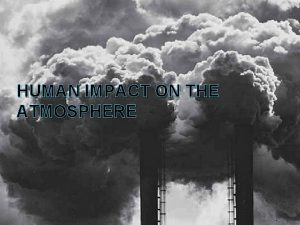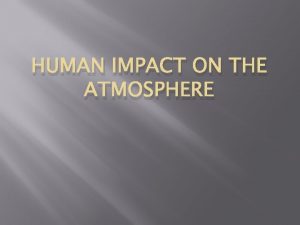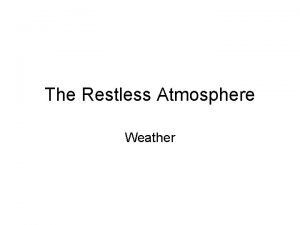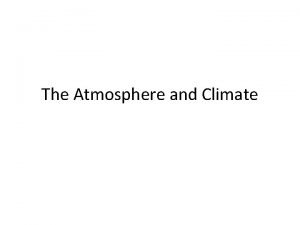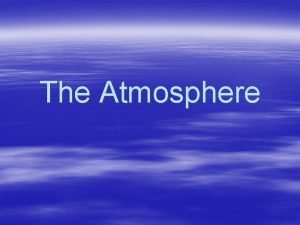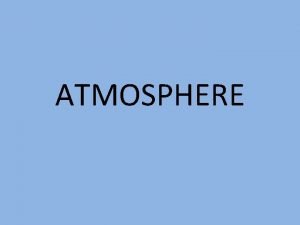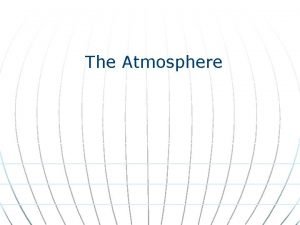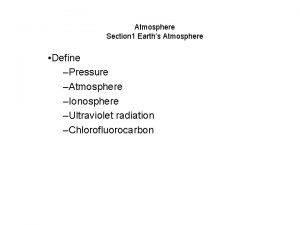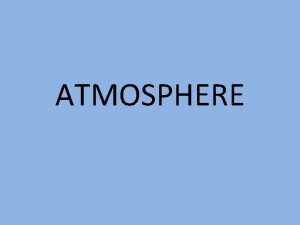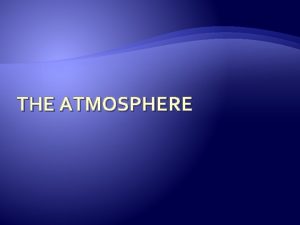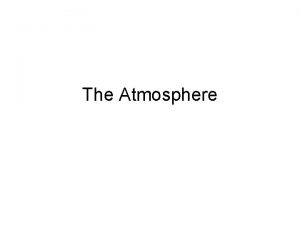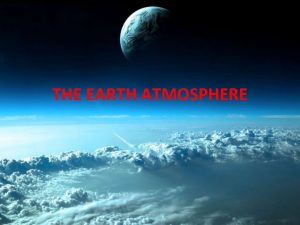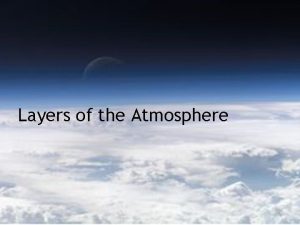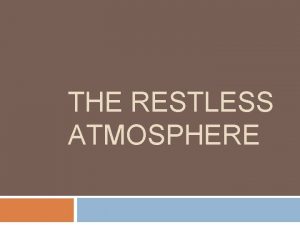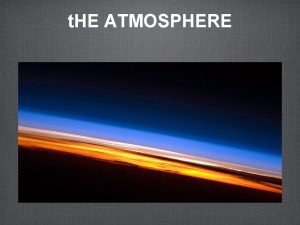Human Impact on The Atmosphere The atmosphere provides























- Slides: 23

Human Impact on The Atmosphere

• The atmosphere provides gases that organisms need to survive, including O 2 and CO 2. • The atmosphere absorbs harmful UV radiation coming from space.

• Without the atmosphere, temperatures on Earth would not be stable. • The Greenhouse Effect is the way by which certain gases in the atmosphere absorb and reradiate thermal energy.


What is air pollution? • The contamination of the atmosphere by toxins from human and natural sources is called air pollution. • Air pollution can come from natural sources, such as volcanic eruptions, wildfires, and dust storms. • In cities and suburbs, most air pollution comes from the burning of fossil fuels.

• Air pollution can be classified as gases such as carbon monoxide (CO), sulfur dioxide (SO 2), and ground-level ozone. • Air pollution can also be classified as particulates. These are tiny particles of solids that are suspended in air. • The particulates from vehicle exhaust are a major cause of pollution in cities.

Pollutants from vehicle exhaust. • Vehicle exhaust is a common source of air pollution (CO, SO 2, HC) in urban areas. • Ground-level ozone is produced when sunlight reacts with vehicle exhaust and oxygen in the air. Ground-level ozone is harmful to all living things.

• Vehicle exhaust also produces smog. • Smog is a brownish haze that forms when ground-level ozone and vehicle exhaust react in the presence of sunlight.

• Smog can damage the lungs and irritate the eyes and nose.


Pollution and Acid Precipitation. • Precipitation that contains acids from air pollution is called acid precipitation. • Burning fossil fuels releases sulfur dioxide and nitrogen oxides into the air. • When these gases mix with water in the atmosphere, they form sulfuric acid and nitric acid.

• Sulfuric acid and nitric acid are strong acids. They can make precipitation so acidic that it is harmful to the environment.

Effects of Acid Rain. • Acid precipitation cause soil and water to become more acidic than normal. • Changes in soil acidity cause soil to lose some of the nutrients that plants need.

• Acid rain can also make lakes and streams more acidic and cause soils to release toxic metals into the water. • This can harm aquatic organisms.

Air Quality • Air quality is the measure of how clean or polluted the air is. • As pollution increases, air quality decreases. • Two major threats are vehicle exhausts and industrial pollutants.

• The Air Quality Index (AQI) is a number used to describe the air quality of an area. • The higher the AQI number, the more people are likely to have health problems linked to air pollution.

How are humans changing the Earth’s climate? • As a result of burning fossil fuels, the atmosphere today contains about 37 percent more carbon dioxide than it did in the mid-1700 s. • Average global temperatures have also risen in recent decades.

• It is hard to know exactly how much the extra greenhouse gases have changed temperatures. • Computer models designed to understand climate change predict that average global temperatures will continue to rise.

Predicted long term effects • Many changes on Earth have already been linked to higher temperatures. • Changes in rainfall patterns and rising sea levels will have many negative effects on life on Earth. • Such changes will likely have political and economic effects on the world.

The Ozone Layer. • Earth’s protective ozone layer is thinning over the polar regions, allowing more harmful ultraviolet radiation to reach Earth’s surface. • Chemicals called chlorofluorocarbons (CFCs) cause ozone to break down. CFCs once had many industrial uses, but now they are banned.

• Unfortunately, CFCs released in the atmosphere decades ago will stay there many more decades, breaking down more ozone.

Reducing air pollution • Everybody can help reduce air pollution in many different ways. • Energy conservation is one of the most important ways to reduce air pollution.

• Fossil fuels are the most commonly used energy resource. When fossil fuels are burned, they release pollution into the air. • If we use less energy, we burn fewer fossil fuels. • There are many ways to conserve energy. What can you do?
 Five factors affecting human movement
Five factors affecting human movement Chaparral human impact
Chaparral human impact Human impact on lithosphere
Human impact on lithosphere Human impact on agriculture
Human impact on agriculture Human impact on the phosphorus cycle
Human impact on the phosphorus cycle Human impact on terrestrial ecosystems
Human impact on terrestrial ecosystems Chapter 27 human impact on earth resources
Chapter 27 human impact on earth resources Chapter 16 human impact on ecosystems
Chapter 16 human impact on ecosystems Desert locations in the world
Desert locations in the world Chapter 16 human impact on ecosystems
Chapter 16 human impact on ecosystems Human impact on the tundra
Human impact on the tundra Human impact on beaches
Human impact on beaches Human impact on groundwater
Human impact on groundwater Lentic ecosystem
Lentic ecosystem Human impact on oceans
Human impact on oceans Drilling for oil and gas can interrupt migration in
Drilling for oil and gas can interrupt migration in Electric field representation
Electric field representation Figure 12-1 provides an overview of the lymphatic vessels
Figure 12-1 provides an overview of the lymphatic vessels General reaction of amino acid metabolism slideshare
General reaction of amino acid metabolism slideshare Nature and scope management accounting
Nature and scope management accounting Leads 2000
Leads 2000 Tertiary amine ir spectrum
Tertiary amine ir spectrum Embryology provides evidence for evolution because
Embryology provides evidence for evolution because If a battery provides a high voltage it can
If a battery provides a high voltage it can
